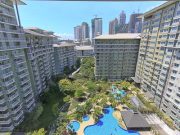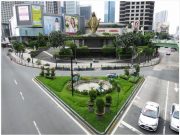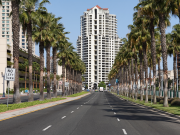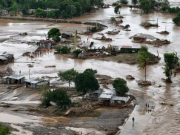
In recent years, the Philippines has experienced a staggering surge in land prices, with some regions witnessing a tenfold increase. This phenomenon has left many wondering about the driving forces behind it. This article explores the reasons behind the soaring land prices in the Philippines, examining the interplay of supply and demand, infrastructure development, and government policies. Shedding light on these factors, including the latest housing trends, will provide a comprehensive understanding of the current real estate landscape in the nation and its implications for both local and foreign investors.
Overview of the Philippine Real Estate Industry
The Philippine real estate industry has experienced significant growth in recent years, driven by robust economic growth, rapid urbanization, and supportive government policies. This sector has become a cornerstone of the Philippine economy, generating employment opportunities and attracting substantial investments from both local and international players. The industry’s expansion is evident in the proliferation of residential, commercial, and mixed-use developments across the country.
Top Philippine real estate market developers have been at the forefront of this growth, implementing innovative strategies to stay competitive. These developers have leveraged advanced technologies, sustainable practices, and strategic partnerships to enhance their offerings and meet the evolving demands of the market. The result is a dynamic and resilient real estate industry that thrives amidst various economic challenges.
Significant Challenges
The Philippine real estate industry faced significant challenges during the 1997 Asian Financial Crisis but has since shown resilience. In the last two years, the market has shown resilience and recovery, bouncing back from the impacts of the pandemic. However, the market proved resilient, bouncing back with a strong growth rate in 2003. During this time, HousingInteractive emerged as the country’s first online brokerage, revolutionizing the real estate landscape and simplifying property purchases.
Land Prices in the Central Business Districts (CBDs) of the Philippines
| YEAR | Price per sqm. | YEAR | Price per sqm. |
| 2013 | PHP 120,400-134,905 | ||
| 2023 | PHP 198,420 | 2012 | PHP 114,061-117,950 |
| 2022 | PHP 190,890-195,750 | 2011 | PHP 103,245-107,169 |
| 2021 | PHP 196,410-188,350 | 2010 | PHP 99,191-102,289 |
| 2020 | PHP 246,000-201,500 | 2009 | PHP 101,000-99,191 |
| 2019 | PHP 244,000-232,000 | 2008 | PHP 96,575-101,735 |
| 2018 | PHP 205,000-230,000 | 2007 | PHP 86,000-95,000 |
| 2017 | PHP 185,950-199,050 | 2006 | PHP 72,250-82,500 |
| 2016 | PHP 167,950-180,200 | 2005 | PHP 70,400-75,250 |
| 2015 | PHP 152,700-163,900 | 2004 | PHP 64,000-70,400 |
| 2014 | PHP 136,534-144,500 | 2003 | PHP 64,000 |
Courtesy of Global Property Guide, House prices Makati CBD
The first half of each year often shows significant fluctuations in land prices, reflecting the dynamic nature of the real estate market.
Dramatic Transformation: The Rise of Land Prices in the Philippines
The real estate landscape in the Philippines has undergone a dramatic transformation in the past two decades. The value of land has skyrocketed, a trend driven by myriad macroeconomic factors that have concurrently shaped the country’s socio-economic fabric.
Foremost among these factors is the steady economic growth the country has experienced. With an average annual growth rate of more than 1 percent, the Philippines has seen its economy flourish, increasing wealth and spending power among its citizens. This economic prosperity has invariably led to a surge in demand for land, pushing prices upwards. The economic growth has manifested in increased income levels and the expansion of businesses and industries, further fueling the demand for commercial properties and, hence, contributing to the escalation in land prices.
Additionally, the need to address climate change has also led to more sustainable and eco-friendly real estate developments.
The past two decades have witnessed rapid urbanization in the Philippines. As more people gravitate towards urban areas for better job opportunities and living conditions, the demand for residential and commercial spaces has soared. Simultaneously, the country’s middle class has experienced significant expansion. With increased disposable income, this demographic has been instrumental in driving up the demand for property, thereby influencing land prices.
Quarterly Change in Land Prices
| YEAR | Q1 | Q2 | Q3 | Q4 |
| 2023 | -0.06 | |||
| 2022 | -0.45 | 4.6 | 6.5 | 7.7 |
| 2021 | -3.43 | -3.27 | -1.92 | -1.03 |
| 2020 | 5.93 | -6.59 | -6.99 | -8.63 |
| 2019 | 5.77 | -17.54 | 4.44 | 8.17 |
| 2018 | 0.92 | 1.89 | 1.05 | 5.75 |
| 2017 | 2.45 | 2.81 | 0.35 | 1.55 |
| 2016 | 2.57 | 1.62 | 1.98 | 1.18 |
| 2015 | 5.58 | 2.36 | 2.36 | 1.77 |
| 2014 | 0.73 | 0.09 | 2.41 | 1.8 |
| 2013 | 1.37 | 6.08 | 1.68 | 0.8 |
| 2012 | 5.55 | 0.19 | -0.56 | 1.74 |
| 2011 | -1.16 | 1.6 | 0.8 | -0.63 |
| 2010 | -0.92 | 0.19 | 0.75 | -0.5 |
| 2009 | -2.11 | -1.03 | -1.88 | -1.78 |
| 2008 | -0.89 | 0.85 | -1.21 | 0.6 |
| 2007 | 3.83 | 1.33 | 1.95 | 3.57 |
| 2006 | -1.82 | 1.3 | 3.92 | 1.88 |
| 2005 | -1.18 | -0.75 | 2.25 | 0.67 |
| 2004 | -1.15 | 0.88 | 0.69 | 2.29 |
| 2003 | -1.36 | -1.06 | -0.23 | -0.58 |
Courtesy of Global Property Guide, Quarterly change in house prices
Projected trends indicate continued increases in land prices, driven by ongoing economic growth and urbanization.
The evolution of the Philippine economy from being predominantly agrarian to becoming increasingly industrialized and service-oriented has profoundly impacted land prices. Agricultural land is being transformed into industrial and commercial spaces to accommodate the changing economic structure. This conversion of land use has led to a decrease in the supply of agricultural land, causing its prices to rise.
Foreign Investments
Foreign investments by various companies have also played a critical role in shaping the real estate market in the Philippines. The country’s attractive free trade and economic zones have drawn foreign investors. This influx of foreign capital has given a substantial boost to the real estate sector, leading to an increase in land prices.
OFW Remittances
Many individuals’ remittances, particularly from overseas Filipino workers, contribute significantly to the economy. They support families financially and bolster the country’s economy by fuelling consumer demand. A substantial portion of these remittances is invested in real estate, driving demand for land and, consequently, its prices.
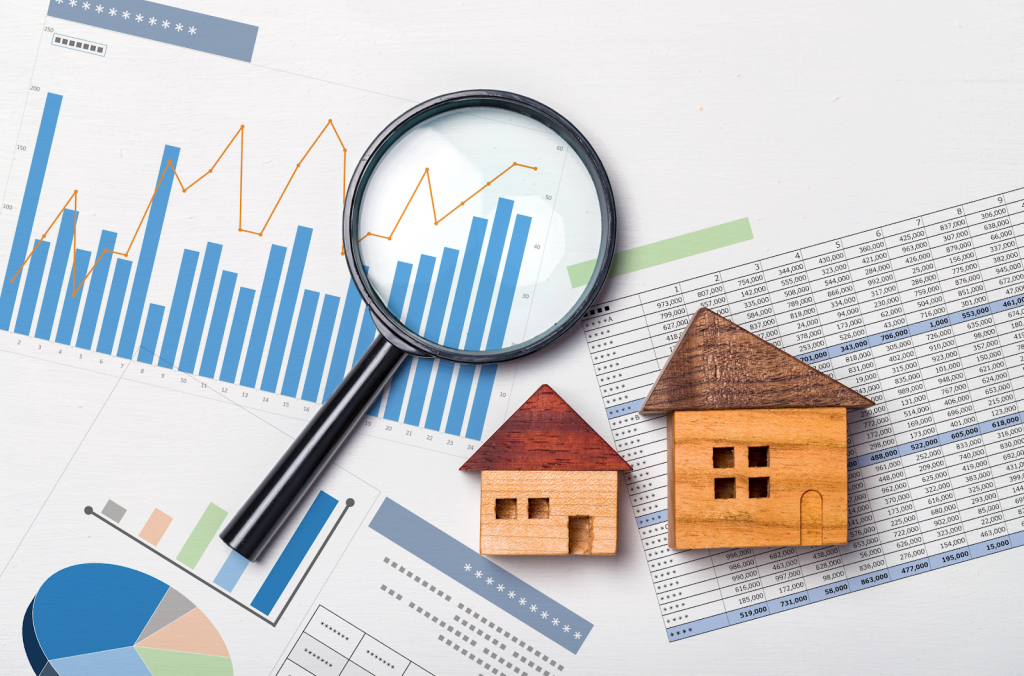
Monetary Policy
Finally, monetary policy and inflation rates also influence land prices. A case in point is 2002, when the Philippine economy grew by 4.5 percent, aided by favorable monetary policy. Despite this growth, inflation was kept in check due to favorable food supply conditions, broad exchange rate stability, and prudent monetary policy. Such conditions create a conducive environment for real estate investment, indirectly contributing to land prices.
Analyzing these monetary policies provides valuable insights into the factors driving land prices.
Over the past twenty years, the Philippine’s dramatic increase in land prices has been a complex interplay of various macroeconomic factors. From consistent economic growth and rapid urbanization to the expansion of the middle class, a transition from an agrarian to an industrial economy, an influx of foreign investments, remittances, and the impact of inflation and monetary policy, each factor has played a pivotal role in shaping the country’s real estate landscape. Understanding these dynamics is crucial for both prospective investors and policymakers as they navigate the intricacies of the Philippine real estate market.
As the Philippine economy continues to recover from the effects of the pandemic, the real estate market is expected to experience further growth. The rising property prices signal a rebound in the sector and present an opportunity for investors and developers to capitalize on the renewed demand for residential properties. Aside from the Philippines’ economy recovering from the pandemic, land prices may likely continue to increase due to these several factors:
Inflation
No wonder this is one of the many factors contributing to the increase in land prices in the Philippines. It leads to higher prices for goods and services, including real estate. The effects of inflation on real estate investments include higher property prices, increased construction costs, and higher mortgage rates, which can impact affordability. Inflation also affects rent prices, making it crucial for investors to consider these factors when making decisions. Real estate can be a hedge against inflation, but investors need to consider factors like location, property type, and market conditions to ensure profitability. Understanding these implications is crucial for making informed investment decisions during periods of high inflation.
In the Philippines, Makati City, Taguig City, and Pasig City are the top prime cities experiencing significant price increases in land properties. Makati City, the country’s financial center, has seen a surge in property prices, particularly for high-end condominiums and luxury properties. Taguig City, home to the thriving Bonifacio Global City business district, has witnessed substantial growth in property prices due to upscale residential developments. Pasig City, featuring the Ortigas Center business district and numerous residential projects, has also experienced a considerable rise in property prices. This highlights the importance of considering location, property type, and market conditions when investing in real estate during periods of high inflation.
Population Growth
The 2020 Census of Population and Housing revealed that the Philippine population reached 110.8 million, with a growth rate of 1.63 percent between 2015 and 2020. The National Capital Region had the highest population density, followed by Calabarzon. These statistics can help inform infrastructure planning, housing development, and related policies. Addressing housing affordability, traffic congestion, and essential services provision is crucial for sustainable development in the country, particularly in high-density regions. The growing population has heightened housing needs, further driving up land prices.
The Philippine Statistics Authority projects that the country’s population will reach 142 million by 2045, growing at an average annual rate of 1.24 percent between 2020 and 2045. This population growth will lead to higher demand for housing, infrastructure, and services, impacting land prices. To address this growth, the government and private sectors must invest in infrastructure development, housing projects, and essential services while implementing policies and regulations for sustainable growth in the real estate market.
Real Estate is a Top Global Industry
It has become one of the most lucrative industries globally, and the Philippines is no exception. The country has seen a boom in property development, with local and foreign developers investing heavily in residential, commercial, and industrial projects. This increased investment has led to higher land prices.
The real estate industry ranks third among the most prominent global sectors in terms of revenue. Factors contributing to its growth include urbanization, population growth, economic expansion, globalization, real estate investment trusts (REITs), and technological advancements. These elements have driven demand for various properties and enabled the industry to generate substantial revenue, significantly contributing to worldwide economic growth.
Business Investment Sector
As the Philippine economy grows, more businesses invest in commercial real estate, driving up the prices of commercial and industrial land.
To thrive in the current real estate market, investors should embrace technology, focus on long-term value, diversify their portfolio, leverage low interest rates, and adapt to changing tenant needs. By employing these strategies, investors can navigate market challenges and position themselves for long-term success in the real estate industry.
Law of Supply and Demand
The basic economic principle of supply and demand plays a significant role in determining land prices. As the demand for land in the Philippines has increased, the available supply has decreased, leading to higher prices. As demand increases, so does the ability of tenants to pay rent, further driving up land prices.
The Philippines’ demand for real estate services is increasing due to limited land supply, urbanization, and economic growth. During these conditions, Metro Manila property prices have experienced a remarkable increase of up to 250%. Infrastructure development and rising construction costs have also driven property values in the region’s real estate market.
Infrastructure Projects
The Philippine government has been implementing various infrastructure projects, such as the Build, Build, Build program, to improve the country’s infrastructure. These projects have increased land value in the surrounding areas, contributing to the escalation in land prices. Government agencies play a crucial role in implementing these infrastructure projects, which drive up land prices.
Infrastructure projects play a crucial role in the real estate industry by improving accessibility, driving economic growth, promoting urban development, enhancing the quality of life, and creating investment opportunities. These developments can increase property values and rental demand and attract further investments, making it essential for real estate investors to consider the impact of infrastructure projects when making investment decisions.
Impact on Land Prices
The growth of the Philippine real estate industry has significantly impacted land prices, especially in urban areas. The increasing demand for housing and commercial spaces has led to a surge in land prices, making it challenging for developers to provide affordable housing options. This surge is driven by the growing population, economic prosperity, and the influx of foreign investments, all of which have heightened the demand for prime real estate.
To address these challenges, the government has implemented policies aimed at regulating land prices and ensuring that housing remains accessible to all segments of the population. These policies include incentives for affordable housing projects, zoning regulations, and measures to curb speculative activities in the real estate market. Despite these efforts, the high demand and limited land supply in urban areas continue to drive prices upward, posing a significant challenge for developers and policymakers alike.
Top Developers in the Philippine Real Estate Market
Top Philippine real estate market developers have played a crucial role in shaping the country’s landscape. These developers, known for their expertise in real estate development, have implemented innovative strategies to stay ahead in the competitive market. Among the most prominent are Ayala Land, SM Prime Holdings, and Megaworld Corporation.
Ayala Land is renowned for its large-scale, master-planned communities integrating residential, commercial, and recreational spaces. SM Prime Holdings, a subsidiary of the SM Group, has made significant contributions through its extensive portfolio of shopping malls, residential projects, and mixed-use developments. Megaworld Corporation, on the other hand, is a pioneer in township developments, creating self-sustaining communities that offer a blend of residential, commercial, and office spaces. These top developers continue to set the benchmark for quality and innovation in the Philippine real estate market.
Land Use and Sustainable Development
Land use and sustainable development are critical in the Philippine real estate industry. The government has implemented policies to promote sustainable development and ensure environmentally friendly land use. These policies encourage the development of green spaces, using renewable energy sources, and adopting sustainable building practices.
Developers also incorporate sustainable practices in their projects, such as using green building materials, implementing energy-efficient systems, and designing buildings that reduce environmental impact. These efforts contribute to environmental conservation and enhance the long-term value and appeal of real estate developments. The Philippine real estate industry is paving the way for more resilient and eco-friendly communities by prioritizing sustainability.
Subdivision Status
It significantly impacts land prices, with factors such as development stage, infrastructure and amenities, developer reputation, location, supply and demand, and homeowners’ association management playing crucial roles. Gated communities have become increasingly popular, contributing to the rise in land prices within these subdivisions. Understanding these factors helps homebuyers and investors make informed decisions when purchasing land within a subdivision, considering potential appreciation and other benefits.
Preselling
Preselling refers to selling properties before they are completed. Developers often offer lower prices during the pre-selling stage, but costs increase as the project nears completion.
Ongoing
Ongoing subdivisions are those currently under construction or development. As the project progresses, land prices may rise due to improved infrastructure and amenities.
RFO (Ready for Occupancy)
These properties are already completed and ready for occupancy. RFO Properties in the Philippines command higher prices due to their immediate availability and the fact that buyers can see the finished product.
Land Development
Land development into residential, commercial, or industrial spaces can significantly increase its value. In the Philippines, there has been a surge in land development projects, contributing to the rise in land prices.
Zoning changes can significantly impact land prices. When an area is rezoned for commercial or industrial use, the value of the land typically increases due to the potential for higher returns on investment. This has been a common occurrence in the Philippines, contributing to the hike in land prices.
Luxury projects are redefining the Metro Manila condominium market, driven by growing demand for upscale living, foreign investments, rising land values, limited supply, and changing lifestyles. These developments cater to the evolving preferences of homebuyers and investors, offering high-end living spaces with top-notch amenities and prime locations, ultimately transforming the real estate landscape in the region.
Understanding Land Appreciation
Appreciation and depreciation are crucial concepts in property ownership, referring to the increase and decrease in a property’s value over time. Factors influencing appreciation include location, economic factors, supply and demand, and population growth. Investing in quality housing can lead to a significant appreciation in property value over time. Depreciation can occur due to obsolescence, poor maintenance, economic downturns, and external factors. Understanding these factors helps individuals make informed decisions when purchasing or investing in real estate, allowing them to better assess long-term financial benefits and risks.
The astounding 10-fold increase in land prices in the Philippines can be traced back to a combination of factors that have created a highly competitive real estate market. Rapid urbanization, population growth, economic development, and infrastructure projects have all contributed to the heightened demand for land in the country’s major urban centers. Additionally, the scarcity of land in densely populated areas like Metro Manila and the influx of foreign investments in the real estate sector have further fueled this surge in land values.
Government Policies and Regulations
Government policies and regulations significantly impact the Philippine real estate industry. The government has implemented policies to regulate land prices, ensure housing is accessible to all population segments, and promote sustainable development. These policies include tax incentives for affordable housing projects, zoning regulations, and measures to prevent speculative activities in the real estate market.
Developers must comply with these policies and regulations to ensure their projects are successful and sustainable. Compliance helps secure necessary permits and approvals and enhances the credibility and marketability of real estate projects. By adhering to government policies, developers can contribute to creating inclusive and sustainable communities.
Influence on Market Dynamics
Government policies and regulations significantly influence market dynamics in the Philippine real estate industry. These policies can impact the supply and demand of housing and commercial spaces, affecting land prices and rental rates. For instance, policies promoting affordable housing can increase the supply of low-cost housing units, stabilizing prices in that segment.
Developers must stay updated with the latest policies and regulations to ensure their projects are successful and sustainable. By understanding and adapting to regulatory changes, developers can better navigate market challenges and capitalize on new opportunities. This proactive approach is essential for maintaining competitiveness and achieving long-term success in the evolving landscape of the Philippine real estate market.
Economic Recovery
As the Philippines continues to grow and develop, it is crucial for policymakers, investors, and stakeholders to carefully consider these factors and implement sustainable strategies to ensure balanced growth and equitable opportunities for all. By addressing the challenges posed by rising land prices, the country can pave the way for a more inclusive and prosperous future for its citizens.
Rents and property prices are expected to rebound gradually in the second half of 2022, driven by economic recovery.
In conclusion, the Philippine real estate market and the overall economy show promising signs of growth and resilience. The continued interest from expatriates and increasing demand from local employees have contributed to rising rents in key business districts like Makati, Fort Bonifacio, and Ortigas. This trend is expected to encourage developers to launch new condominium projects in 2023.
However, developers and investors must monitor the high inflation rate and its potential impact on interest and mortgage rates, which could affect the real estate market dynamics.
The Philippines’ strong economic performance in 2022, with a 7.6% growth rate, the best since 2010, highlights the country’s economic recovery. According to the Philippine Statistics Authority (PSA), this growth was primarily driven by sectors such as wholesale and retail trade, manufacturing, motor vehicle repair, and construction.With the government projecting an economic growth rate of between 6% and 7% for 2023, the future looks bright for the Philippine economy and, by extension, the real estate market. Therefore, investing in Central Business District (CBD) properties could provide significant returns in the long run.



